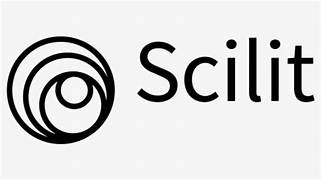Effect of Phoenix dactylifera on Changes in Placental Growth Rate Factors in Pregnant Women
DOI:
https://doi.org/10.64141/pmhs.v2i1.22Keywords:
Phoenix dactylifera, PlGF, PreeklampsiaAbstract
The annual maternal mortality rate (MMR) fluctuates and one of the causes is preeclampsia with 33.3% of the incidence of preeclampsia and maternal mortality. Placental growth factor (PlGF) has a major role in the development of preeclampsia. Objective: Analyzing the Effect of Phoenix Dactylifera on Changes in Levels of Placental Growth Factor (PlGF) as a predictor of preeclampsia in pregnant women. Method: This research uses a hybrid method, which combines two research methods (Quasy Experiment and Prospective Khohort) with a pre-post test control design. A total of 40 respondents (30 respondents in the ajwa date group and 10 respondents in the group recommended to eat fruits and vegetables) the sample size was determined using the Yamane formula with simple random sampling technique. Data analysis using the Wilcoxon test. Results: The Wilcoxon test on changes in PLGF levels based on the pre-post test intervention group produced the Asymp value. Sig 0.000 <0.05 (Mean: 0.591-3.856) and the control group pre-post test resulted in Asymp values. Sig 0.073> 0.05 (Mean: 1.040-0.701). Conclusion: The changes that occurred in the intervention group were due to a significant decrease in blood pressure which affected PLGF levels in blood plasma after giving phoenix dactylifera fruit for 8 weeks and given 7 eggs / day (100 grams). Phoenix dactylifera can inhibit the development of PlGF in blood plasma thus preventing the occurrence of preeclampsia in pregnant women who are hypertensive.
References
Abdulsalam, A., Sushama, L. B., Rizvi, Z., & Tallavajhula, M. (2017). Primary, Spontaneous, Complete Colporrhexis during Precipitate Vaginal Birth after Caesarean Section (VBAC). Journal of Case Reports, 7(1), 39–42. https://doi.org/10.17659/01.2017.0011
Ahmed, M. A., Sharif, M. E., Rayis, D. A., Nasr, A. M., & Adam, I. (2018). Hepatitis B infection and preeclampsia among pregnant Sudanese women. Virology Journal, 15(1), 18–21. https://doi.org/10.1186/s12985-018-0927-5
Akolekar, R., Poon, L., & Wright, D. (2013). Bersaing Risiko Model di Screening awal untuk Preeklamsia oleh Biofisik dan Biokimia Penanda. 8–15.
Akolekar, R., Syngelaki, A., Poon, L., Wright, D., & Nicolaides, K. H. (2013). Competing risks model in early screening for preeclampsia by biophysical and biochemical markers. Fetal Diagnosis and Therapy, 33(1), 8–15. https://doi.org/10.1159/000341264
Arihiro, S. and S. saito. (2018). Preeclampsia Basic, Genomic, and Clinical. In S. Saito (Ed.), Springer Singapore (Ikuo Konis, Vol. 2, Issue 6). Springer Singapore. https://doi.org/https://doi.org/10.1007/978-981-10-5891-2
Bashandy, M. A., Abd-el-aal, A., Ibrahim, D. F., & El-sharkawy, M. A. (2016). Protective effects of date palm extract as natural antioxidants on hepatotoxicity induced by Cerastes cerastes venom in albino rats. International Journal of Advanced Research, 4(3), 647–665.
Bezerramaia, S., & Lopes, L. (2012). Pencegahan Preeklamsia. 2012.
Burke, S. D., Zsengellér, Z. K., Khankin, E. V., Lo, A. S., Rajakumar, A., DuPont, J. J., McCurley, A., Moss, M. E., Zhang, D., Clark, C. D., Wang, A., Seely, E. W., Kang, P. M., Stillman, I. E., Jaffe, I. Z., & Karumanchi, S. A. (2016). Soluble FMS-like Tyrosine Kinase 1 promotes angiotensin II sensitivity in preeclampsia. Journal of Clinical Investigation, 126(7), 2561–2574. https://doi.org/10.1172/JCI83918
Chau, K., Hennessy, A., & Makris, A. (2017). Placental growth factor and pre-eclampsia. Journal of Human Hypertension, 31(12), 782–786. https://doi.org/10.1038/jhh.2017.61
De Falco, S. (2012). The discovery of placenta growth factor and its biological activity. Experimental and Molecular Medicine, 44(1), 1–9. https://doi.org/10.3858/emm.2012.44.1.025
Dinkes Provinsi Sul-Sel. (2018). Profile Kesehatan Provinsi Sulawesi Selatan. Journal of Chemical Information and Modeling, 53(9), 1689–1699.
Ghnimi, S., Umer, S., Karim, A., & Kamal-Eldin, A. (2017). Date fruit (Phoenix dactylifera L.): An underutilized food seeking industrial valorization. NFS Journal, 6, 1–10. https://doi.org/10.1016/j.nfs.2016.12.001
Ghojazadeh, M. et al. (2013). Prognostic Risk Factors For Early Diagnosing Of Preeclampsia In Nulliparas. Nigerian Medical Journal : Journal of the Nigeria Medical Association, 54(5), 344. https://doi.org/10.4103/0300-1652.122368
Hamad, I., Abdelgawad, H., Al Jaouni, S., Zinta, G., Asard, H., Hassan, S., Hegab, M., Hagagy, N., & Selim, S. (2015). Metabolic analysis of various date palm fruit (Phoenix dactylifera L.) cultivars from Saudi Arabia to assess their nutritional quality. Molecules, 20(8), 13620–13641. https://doi.org/10.1007/s12206-017-0606-2
Irwinda, R., Surya, R., & Nembo, L. F. (2016). Impact of pregnancy-induced hypertension on fetal growth. Medical Journal of Indonesia, 25(2), 104–111. https://doi.org/10.13181/mji.v25i2.1381
Kemenkes RI. (2019). Profil Kesehatan Indonesia Tahun 2019. In Kementrian Kesehatan Repoblik Indonesia (Vol. 42, Issue 4).
Kenny, L. C., Black, M. A., Poston, L., Taylor, R., Myers, J. E., Baker, P. N., McCowan, L. M., Simpson, N. A. B., Dekker, G. A., Roberts, C. T., Rodems, K., Noland, B., Raymundo, M., Walker, J. J., & North, R. A. (2014). Early pregnancy prediction of preeclampsia in nulliparous women, combining clinical risk and biomarkers: The Screening for Pregnancy Endpoints (SCOPE) international cohort study. Hypertension, 64(3), 644–652. https://doi.org/10.1161/HYPERTENSIONAHA.114.03578
Kordi, M., Vahed, A., Rezaee Talab, F., Mazloum, S., & Lotfalizadeh, M. (2017). Anxiety during pregnancy and preeclampsia: a case - control study. Journal of Midwifery & Reproductive Health, 5(1), 814–820. https://doi.org/10.22038/jmrh.2016.7881
Lai, C., & Coulter, S. A. (2017). Hipertensi dan Kehamilan. 44(5), 350–351.
Levine, R. J., Maynard, S. E., Qian, C., Lim, K.-H., England, L. J., Yu, K. F., Schisterman, E. F., Thadhani, R., Sachs, B. P., Epstein, F. H., Sibai, B. M., Sukhatme, V. P., & Karumanchi, S. A. (2004). Circulating Angiogenic Factors and the Risk of Preeclampsia. New England Journal of Medicine, 350(7), 672–683. https://doi.org/10.1056/NEJMoa031884
Luft, F. C. (2014). Soluble fms-like tyrosine kinase-1 and atherosclerosis in chronic kidney disease. Kidney International, 85(2), 238–240. https://doi.org/10.1038/ki.2013.402
March, M. I., Geahchan, C., Wenger, J., Raghuraman, N., Berg, A., Haddow, H., McKeon, B. A., Narcisse, R., David, J. L., Scott, J., Thadhani, R., Karumanchi, S. A., & Rana, S. (2015). Circulating angiogenic factors and the risk of adverse outcomes among Haitian women with preeclampsia. PLoS ONE, 10(5), 1–12. https://doi.org/10.1371/journal.pone.0126815
Maynard, S. E., Min, J., Merchan, J., Lim, K.-H., Li, J., Mondal, S., Libermann, T. A., Morgon, J. P., Sellke, F. W., Stillman, I. E., Epstein, F. H., Sukhatme, V. P., & Karumanchi, S. A. (2003). Excess Placental Soluble fms-like Hypertension , and Proteinuria in. Journal of Clinical Investigation, 111(5), 649–658. https://doi.org/10.1172/JCI200317189.Introduction
Mohamed Lemine, F. M., Mohamed Ahmed, M. V. O., Ben Mohamed Maoulainine, L., Bouna, Z. el A. O., Samb, A., & Ali, A. O. M. S. (2014). Antioxidant activity of various Mauritanian date palm (Phoenix dactylifera L.) fruits at two edible ripening stages. Food Science and Nutrition, 2(6), 700–705. https://doi.org/10.1002/fsn3.167
Mohamed, R. M. A., Fageer, A. S. M., Eltayeb, M. M., & Mohamed Ahmed, I. A. (2014). Chemical composition, antioxidant capacity, and mineral extractability of Sudanese date palm (Phoenix dactylifera L.) fruits. Food Science and Nutrition, 2(5), 478–489. https://doi.org/10.1002/fsn3.123
Mustafa, R., Ahmed, S., Gupta, A., & Venuto, R. C. (2012). A comprehensive review of hypertension in pregnancy. Journal of Pregnancy, 2012. https://doi.org/10.1155/2012/105918
Nafiah, F. (2018). Pengaruh Pemberian Ekstrak Daging Buah Kurma Ajwa ( Phoenix dactylifera L .) Terhadap Kadar Glukosa Darah Embrio Mencit ( Mus musculus ). p48-49.
National Institute for Health and Care Excellence. (2016). PlGF-based testing to help diagnose suspected pre-eclampsia (Triage PlGF test, Elecsys immunoassay sFlt-1/PlGF ratio, DELFIA Xpress PlGF 1-2-3 test, and BRAHMS sFlt-1 Kryptor/BRAHMS PlGF plus Kryptor PE ratio). NICE Diagnostic Guidance 23, May, 1–46. https://doi.org/10.1016/j.brainres.2010.04.083
Nugteren, J. J., Snijder, C. A., Hofman, A., Jaddoe, V. W. V., Steegers, E. A. P., & Burdorf, A. (2012). Work-related maternal risk factors and the risk of pregnancy induced hypertension and Preeclampsia during pregnancy. The generation R study. PLoS ONE, 7(6). https://doi.org/10.1371/journal.pone.0039263
POGI. (2016). PNPK Diagnosis dan Tatalaksana Preeklampsia. 1–48. Preeklamsia dan faktor angiogenik sFlt-1 / rasio PlGF dalam diagnosis preeklampsia. (n.d.). 1–12.
Roberts, James, Druzin Maurice, August Phyllis A, Gaiser Robert R, Bakris George, Granger Joey P, Barton John R, Jeyabalan Aurun, Bernstein Ira M, J. D. D. (2013). Hype Rte N Sion.
Saraswati, N., & Mardiana, M. (2016). Faktor Risiko Yang Berhubungan Dengan Kejadian Preeklampsia Pada Ibu Hamil (Studi Kasus Di Rsud Kabupaten Brebes Tahun 2014). Unnes Journal of Public Health, 5(2), 90. https://doi.org/10.15294/ujph.v5i2.10106
Sava, R. I., March, K. L., & Pepine, C. J. (2018). Hypertension in pregnancy: Taking cues from pathophysiology for clinical practice. Clinical Cardiology, 41(2), 220–227. https://doi.org/10.1002/clc.22892
Sembiring, M. C. M. (2020). Data RSIA Khadijah 1 Makassar. Data Primer RSIA Khadijah 1 Makassar, 2(0411), 3629245.
Sinuraya, R. K., Nisa, H., Lokajaya, T., & Puri, T. N. S. (2017). PlGF/sFlt‑1 as Early Detection Biomarker for Preeclampsia. Indonesian Journal of Clinical Pharmacy, 6(2), 123–134. https://doi.org/10.15416/ijcp.2017.6.2.123
Sovio, U., Gaccioli, F., Cook, E., Hund, M., Stephen Charnock-Jones, D., & Smith, G. C. S. (2017). Prediction of Preeclampsia Using the Soluble fms-Like Tyrosine Kinase 1 to Placental Growth Factor Ratio: A Prospective Cohort Study of Unselected Nulliparous Women. Hypertension, 69(4), 731–738. https://doi.org/10.1161/HYPERTENSIONAHA.116.08620
Subki, A. H., Algethami, M. R., Baabdullah, W. M., Alnefaie, M. N., Alzanbagi, M. A., Alsolami, R. M., & Abduljabbar, H. S. (2018). Prevalence, risk factors, and fetal and maternal outcomes of hypertensive disorders of pregnancy: A retrospective study in Western Saudi Arabia. Oman Medical Journal, 33(5), 409–415. https://doi.org/10.5001/omj.2018.75
Sulistyowati, S., Helen, L., Tanjung, A., Respati, S. H., Yuliantara, E. E., & Soetrisno. (2017). Rekombinan Vascular Endothelial Growth Factor -121 Menekan Ekspresi Heat Shock Protein -70 pada Plasenta Mencit Model Preeklampsia. Jurnal Veteriner, 18(36), 589–596.
Tsiakkas, A., Duvdevani, N., Wright, A., Wright, D., & Nicolaides, K. H. (2015). Serum larut fms-seperti tyrosine kinase-1 dalam tiga trimester kehamilan : efek dari karakteristik ibu dan riwayat medis. 584–590.
World Health Organization. (2018). WHO methods and data sources for country-level causes of death 2000-2016. World Health Organization, March, 1. http://hdr.undp.org/sites/default/files/hdr2019.pdf
Zahra, S., Jafar, V., & Omid, A. S. (2015). Antioxidant activity and total phenolic contents of some date varieties from Saravan Region, Baluchistan, Iran. Journal of Medicinal Plants Research, 9(4), 78–83. https://doi.org/10.5897/JMPR2014.5676
Zhang, C. R., Aldosari, S. A., Vidyasagar, P. S. P. V., Shukla, P., & Nair, M. G. (2017). Health-benefits of date fruits produced in Saudi Arabia based on in vitro antioxidant, anti-inflammatory and human tumor cell proliferation inhibitory assays. Journal of the Saudi Society of Agricultural Sciences, 16(3), 287–293. https://doi.org/10.1016/j.jssas.2015.09.004
Downloads
Published
How to Cite
Issue
License
Copyright (c) 2025 Siti Husaidah, Desi Ernita Amru, Heroyanto Heroyanto

This work is licensed under a Creative Commons Attribution-ShareAlike 4.0 International License.
Licence Term
Licence

Copyright @2024 Papua Medicine and Health Science. This is an open-access article distributed under the terms of the licensed under a Creative Commons Attribution-ShareAlike 4.0 International License.














